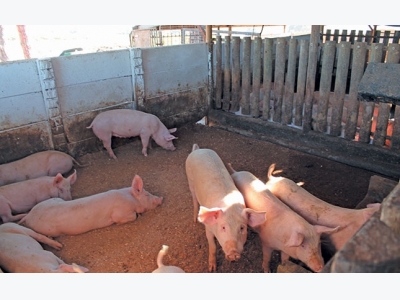Basic infrastructure for small-scale pig farming
The size of your pig housing infrastructure will depend on the number of pigs you have. Ideally, it should be strong, simple and adaptable
 Influenza A Virus in Swine: What You Need to Know
Influenza A Virus in Swine: What You Need to Know Particularly in the early nursey phase when they’re starting on feed and early in the grow/finish phase; however, pigs of any age are susceptible.
 Strategies to control piglet weight variability in the nursery (2/2): Feeding and feeding
Strategies to control piglet weight variability in the nursery (2/2): Feeding and feeding Controlling and reducing dispersion of live weight during the pig production cycle is one of the biggest challenges farmers and technicians face today.
 Strategies to control piglet weight variability in the nursery (1/2): farrowing,segregation
Strategies to control piglet weight variability in the nursery (1/2): farrowing,segregation Although dispersion in the farrowing quarters is decisive in the final dispersion, we can take steps to correct some of this dispersion in the nursery.
 Insects as an alternative raw material in pig feed
Insects as an alternative raw material in pig feed Products obtained from insects have a high proportion of crude protein: 40-44% in the case of the black soldier fly larvae, or up to 60% in the case of black
 Prevention of the disease caused by Actinobacillus pleuropneumoniae
Prevention of the disease caused by Actinobacillus pleuropneumoniae Once clinical disease of pleuropneumonia has been confirmed through laboratory examination, prevention measures must be applied.
 Benefits of corn co-products from wet milling for pigs
Benefits of corn co-products from wet milling for pigs Researchers have reported that using corn co-products from wet milling can be beneficial to pig diets.
 Piglets can thrive on sunflower meal
Piglets can thrive on sunflower meal With a novel processing method, feed ingredients like rapeseed cake as well as sunflower meal can be used in piglet feed, as it is better digested
 Benefits of extra liquid methionine for sows
Benefits of extra liquid methionine for sows Liquid methionine added to diets for lactating sows leads to both more fat and lactose concentration in the milk as well as a better gut absorption of nutrients
 Mycotoxin deactivation with natural enzymes
Mycotoxin deactivation with natural enzymes Using enzymes is one of the efficient approaches against the toxic effects of mycotoxins, which transforms the mycotoxin into a non-toxic molecule
 Producing pigs without antibiotics, How to do it?
Producing pigs without antibiotics, How to do it? High standards of biosecurity and hygiene are amongst the most important measures needed to achieve pig production that is free from antibiotics use
 Pig diets, Porcine plasma or egg yolk antibodies?
Pig diets, Porcine plasma or egg yolk antibodies? With spray-dried porcine plasma (SDPP), how is pig performance affected when compared to diets containing egg yolk antibodies? Spanish researchers did a trial.
 Healthy sow gut, higher litter weight
Healthy sow gut, higher litter weight Sows have become more productive, resulting in more but vulnerable piglets. Simultaneously, sows endure large body weight losses during lactation.
 Fly larvae protein in animal feed
Fly larvae protein in animal feed Chances are that most of the meat you consume comes from livestock reared on protein sources such as soya. But there is an urgent need to increase supply
 Enzymes make the pelleting process less power consuming
Enzymes make the pelleting process less power consuming The feed pelleting process consumes a lot of energy. One way to reduce the energy needed is to use enzymes. They are known to speed up reactions
 Enhancing pig immunity with yeast additives
Enhancing pig immunity with yeast additives The addition of probiotic yeast appears to positively affect the piglet immune status, whether supplied in sow feed or in weaner piglet feed.
 Effects of phytogenic feed additives on animal health
Effects of phytogenic feed additives on animal health Phytogenic substances represent one of the most interesting classes of feed additives. They bear the potential to effectively repress the pathogenicity
 Drinking water supplementation with organic iron in lactating piglets
Drinking water supplementation with organic iron in lactating piglets Adding organic iron in piglets drinking water during lactation may be an alternative to parenteral administration of inorganic iron.
 Creep feed Getting more piglets interested
Creep feed Getting more piglets interested Getting piglets to eat before weaning helps them to ease the weaning dip. Not even 50% of them, however, actually do eat prior to weaning. How best to stimulate
 Animal feed savings with a multi-component enzyme
Animal feed savings with a multi-component enzyme A combination of the enzymes xylanase and beta-glucanase gives nutritionists more freedom to use high levels of grains in pig and poultry diets.
